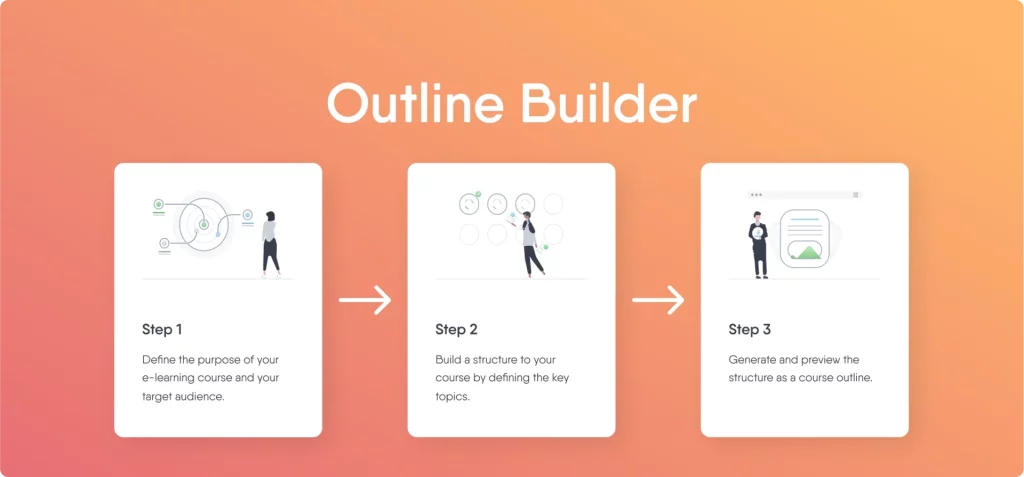Synchronous vs asynchronous learning: learn their advantages and disadvantages
The debate over choosing synchronous learning vs asynchronous learning in the last two decades, and more so now in the new post-pandemic era, has brought us to the crossroads of learning. Let’s learn about the difference between synchronous and asynchronous learning, as well as the advantages and disadvantages they bring.

What is synchronous learning?
With synchronous learning, everything happens live and in the moment – just like a webinar or a workshop. Before the Covid-19 pandemic, synchronous learning primarily took place in an in-person classroom setting, but that’s all changed since then. We’re now seeing synchronous learning take place in digital, live training formats, like live webinars, virtual classes, video conferences, and live chat rooms.
Advantages of synchronous learning
There are several advantages to the live nature of synchronous learning, including:
-
Real-time discussions
Because learners can interact with their peers and instructors in real-time, everyone can be fully engaged with each other. This leaves scope for elaborate, high-quality discussions to unfold.
-
Immediate feedback
Similarly, because learners can ask their instructors questions in real-time, they can get instant feedback on their progress. This allows instructors to meet learners in their exact moment of learning need – instead of only sharing feedback several hours or days later when the lesson is no longer fresh on the learner’s mind.
-
Accelerated learning curve
And because learners get to clarify their doubts on the spot, they can move on from their learning obstacles much sooner, allowing them to accelerate their learning curve.
Disadvantages of synchronous learning
There are also some challenges to synchronous learning. Here are the main disadvantages:
-
Not flexible
As synchronous learning happens at a set time, it’s not flexible to account for different schedules and priorities. Learners and instructors alike are expected to commit to a fixed time and place, which can be inconvenient for those with other commitments.
-
Inconsistent quality
Under synchronous learning, the quality of a training session is totally dependent on who the instructor is. Ultimately, this means the quality of synchronous learning can be inconsistent.
-
Lack of personalized attention
With multiple learners participating in a single training session, it’s easy to feel the need to compete for an instructor’s attention. A lack of attention from instructors could also lead to favoritism toward some learners.
Now that we’ve covered a few advantages and disadvantages of synchronous learning, let’s take a look at asynchronous learning.
Switch to online learning
Get expert tips for a smooth transition from classroom training to digital learning.
What is asynchronous learning?
By definition asynchronous learning refers to forms of learning that do not occur in the same place or at the same time. That means that, under asynchronous learning, learners can engage with their materials anytime, at their own pace. And to allow for this flexibility, asynchronous learning is typically delivered in the form of pre-recorded or downloadable digital content. Some common examples include e-learning courses, recorded webinars, videos, podcasts, downloadable PDF resources, and discussion boards.
Now that we have a clearer picture of the definition of asynchronous learning, let’s explore its advantages and disadvantages.
Advantages of asynchronous learning
Below is a list of the main advantages of asynchronous learning:
-
Feedback and interaction is available
Even though asynchronous learning doesn’t happen in a social setting, learners can still post questions to discussion boards or send them via email and get responses later. There is still room for peer collaboration and interaction with instructors despite not engaging with each other in real-time.
-
Flexible scheduling
One of the main benefits of asynchronous learning is that learners can engage in their preferred time and location, and at their own pace. This allows both instructors and learners to prioritize any other commitments they may have besides training, like caring for families or attending to their daily work activities.
-
Unlimited learners
And because asynchronous learning can take place across multiple locations and at different times, there is no limit to the number of learners allowed to participate in a single course. This makes the training content far more accessible.
-
Optimized classroom discussions
Under asynchronous learning, a bulk of the learning happens on the learner’s own time. This means trainers can use their shared class time to facilitate meaningful discussions beyond teaching the material.
Disadvantages of asynchronous learning
As expected, there are also a few disadvantages to asynchronous learning:
-
Lack of personal touch
Without an instructor or peers present, asynchronous learning models lack a personal touch. Learners are unlikely to form classroom relationships along their learning journey the way they would in a real-time learning environment.
-
Lack of attention
And this lack of real-time interaction with peers and instructors leaves a vacuum in a learner’s experience. Without people to turn to in their moment of learning need, learners will have to navigate challenges on their own.
-
Requires learner’s self-discipline
Because asynchronous courses are individualistic, learners will need to practice self-discipline to stay on top of their development. Those without discipline may not fare well in asynchronous learning.
Asynchronous vs synchronous learning: Which is better?
Having analyzed the differences, benefits, and disadvantages of synchronous and asynchronous learning, the method of learning you choose depends on many factors unique to your organization. It’s worth assessing your learning objectives, preferred course delivery method, content types, and even the availability of trainers.
Although synchronous learning offers the advantage of real-time conversations with trainers or peers, the flexibility of asynchronous learning benefits employees with busy schedules –especially those who work from home while managing their families. Fixed class times might not work for their hectic routines. They’re likely better off relying on recorded sessions or resources accessible offline.
With the growing push for digital transformation across all industries, we believe asynchronous learning better caters to the lives of modern employees. You can check out our free guide asynchronous learning for an in-depth overview of the subject.
For the best of both worlds, you could also employ a blended learning approach to combine your preferred elements from asynchronous and synchronous learning. For example, you might combine asynchronous-style online courses with synchronous-style live webinars.
What’s most important is that you build your learning experiences around your learners’ needs and what keeps them engaged.


